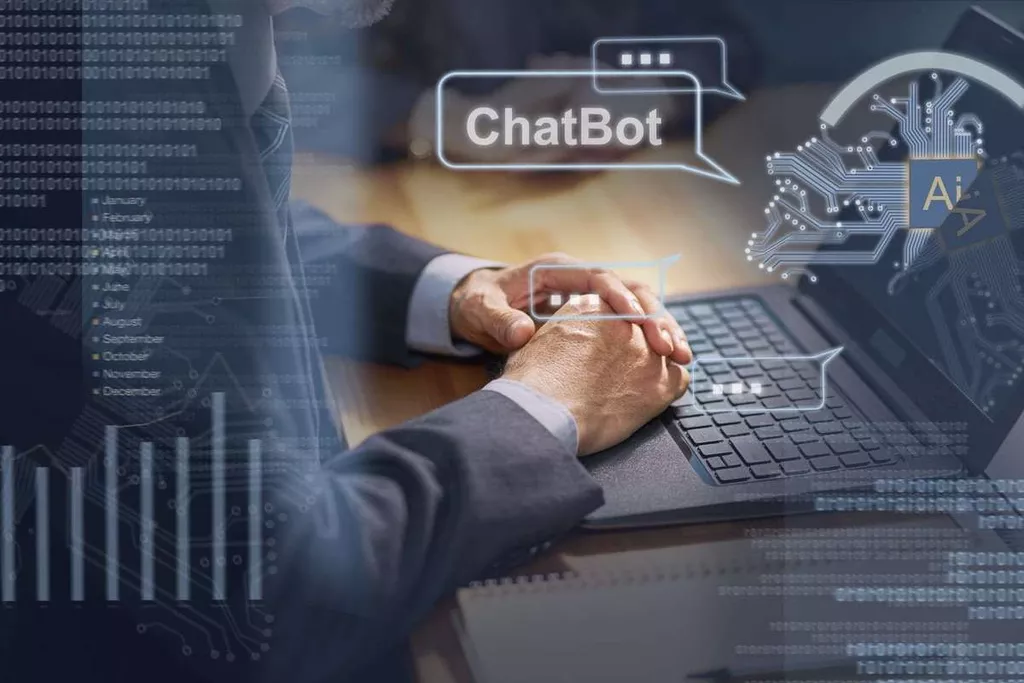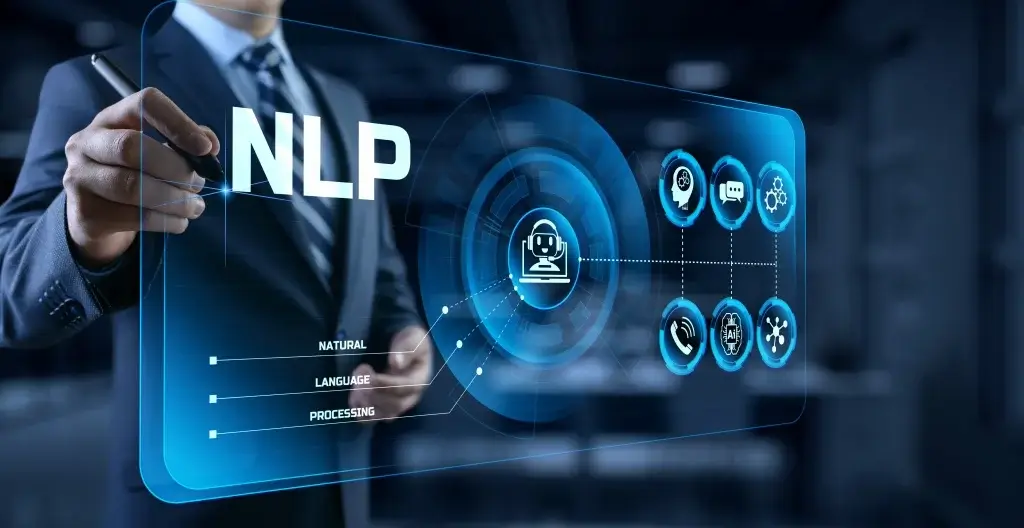How AI Is Reshaping Five Manufacturing Industries
Understanding How Artificial Intelligence is Changing Advanced Manufacturing and Other Sectors of the Economy San Francisco Fed
At the same time, based on the input–output table, industries with greater forward and backward linkages with the manufacturing industry were selected to analyze the inter-industry spillover effect. At the same time, AI creates new types of jobs for the labor force (Yang et al., 2018). For example, intelligent customer service is still unable to provide high-quality services equivalent to human customer service at this stage. The development of AI promotes the development, operation, and maintenance of intelligent products. The application of AI covers a wide range of professional skills, from hardware to software, providing more development opportunities for high-skilled practitioners in the technology and data fields.
Then, we examine developments in the power and performance of emerging AI applications in the biopharmaceutical industry. One of EERN’s chief goals is to develop deeper insights into how new technologies are being integrated into workplaces and across industries. To this end, we are engaging industry and community leaders in our district about how they are adopting AI tools in their businesses. Communities and businesses play a crucial role in shaping the Federal Reserve’s monetary policy. To inform our decision-making, the San Francisco Fed hosts discussions with the people we serve so we can hear their stories and perspectives on how economic data translates into real impacts in the Twelfth District.
AI in Manufacturing FAQs
The need to secure converged Information Technology/Operational Technology (IT/OT) systems will grow in importance. Manufacturers must implement robust cybersecurity measures, including strong access controls and continuous threat monitoring, to safeguard these technologies. You can foun additiona information about ai customer service and artificial intelligence and NLP. Addressing risks related to data privacy, algorithmic bias and adversarial attacks is crucial for safe AI deployment.
Prior to Laserfiche, Nam drove strategy as part of the marketing teams at Legrande Health and Crane ChemParma & Energy, among other organizations. Manual data entry and processing are prone to human errors, which can lead to costly and time-consuming mistakes that ChatGPT App can cause delays across an organization. With its advanced recognition capabilities, AI can accurately extract data from documents, minimizing the risk of errors. This improves data accuracy and enhances the reliability of the information used for decision-making.
How AI Is Reshaping Five Manufacturing Industries
This collaborative approach ensures that both parties are aligned in their efforts to maintain robust cybersecurity defenses. In 2023, the sector experienced the highest share of cyberattacks among leading industries, a 42% increase from 2022. [3] These alarming trends underscore the urgent need for robust cybersecurity strategies tailored to the unique vulnerabilities of the manufacturing environment. The adoption of AI in manufacturing faces significant hurdles due to a shortage of skilled professionals. Finding experts with a deep understanding of AI and practical knowledge of manufacturing processes is challenging. Many manufacturers struggle to recruit talent with the necessary skills in AI, machine learning, and data science, creating a skills gap that slows down AI implementation.
AI enables predictive maintenance by continuously monitoring equipment and analyzing data to predict when machines are likely to fail. This reduces the likelihood of unexpected breakdowns, which can be costly and time-consuming. Predictive maintenance helps manufacturers keep production lines running smoothly and efficiently. From the Industrial Revolution to the adoption of robotics, each technological leap has significantly impacted how goods are produced. Now, AI is emerging as the next frontier in manufacturing, reshaping operations across the entire supply chain. Manufacturers should share best practices, cybersecurity intelligence, and conduct regular reviews of security measures with their vendors.
AI use cases in manufacturing
Looking ahead, the future of AI-driven automation holds immense promise for manufacturers. AI technologies will continue to evolve, enabling algorithms to discern intricate relationships within manufacturing processes and optimize resource allocation. As AI algorithms become more specialized and adept at identifying analogies and patterns, manufacturers can expect unparalleled efficiency gains and competitive advantages.
Meanwhile, 16% say that they are still developing and implementing AI on an ad hoc basis. Just 12% have managed to scale AI company-wide, and these leaders have been on their journeys for over five years, on average, reporting lower costs, sharper decision-making and greater customer engagement. Commercial solutions tend to provide quicker implementation, leading to potentially faster time-to-value.
Many powerful initiatives occurring in AI/ML design and application are improving the power, suitability, and safety of such technologies in the biopharmaceutical industry. The discussions provided by business and community leaders at the forefront of technological change are crucial as we work to advance the nation’s monetary, financial, and payment systems to support a strong economy for all Americans. Nonetheless even in this area of AI, it is difficult to attract and retain enough adequately trained employees.
This trend is accentuated by the integration of advanced manufacturing technologies, the adoption of Industry 4.0 principles, and the evolution towards smart factories. The interconnected nature of IoT devices and automated machinery in these environments results in a substantial influx of data, necessitating AI solutions to process and derive actionable insights. The ability to quickly adapt to varying production needs is becoming increasingly important. AI enhances CNC machining’s flexibility by enabling rapid adjustments to production parameters.
This approach is particularly valuable in the aerospace industry, where weight reduction translates directly into fuel savings and lower emissions. Boeing uses AI to analyze multiple design iterations, selecting the most efficient configurations. BMW uses AI-powered ChatGPT robots to assemble car parts, significantly reducing the time required to produce each vehicle while maintaining high precision and safety standards. There is a tendency inside the boardroom to view cybersecurity as a cost center rather than a strategic investment.
Where upgrading a section of the plant floor at a time minimizes the risk to overall production by reducing the vulnerability of plant wide downtime through proper production planning. Starting small also creates an increased reservoir of spare parts for consumption elsewhere in the plant. This extends the transition period, allowing for more time to train maintenance and production teams. Using data of stable processes to confidently address the limitations of a production line. This benefit can manifest itself in efficiency improvements, such as predictive maintenance rather than reactive repairs.
But with an AI-driven toolpath proposal system this issue is addressed by offering intelligent guidance based on proven past experiences. The AI system employs a neural network trained on various common geometries encountered in machining. This network detects shape patterns and suggests the most suitable machining operations for each geometry. Additionally, 3D printing is an excellent process to develop novel parts using AI because of its nearly limitless design flexibility. The system already knows the limitations of each type of 3D printing technology and—informed by that—can apply those learnings to DFM advice. But we are beginning to see the technology’s impact, offering a potential roadmap for the future.
A 2024 study by the International Journal of Production Economics revealed that AI-driven scheduling systems can improve production efficiency by up to 20%. AI algorithms can be used to automatically generate and optimize toolpaths, manage machine availability and reduce lead times, leading to more streamlined operations and enhanced throughput. According to a 2023 report by Deloitte, AI-powered quality control systems can reduce defect rates by up to 50%. AI algorithms analyze data from sensors embedded in CNC machines to detect deviations and anomalies that human operators might miss. This ensures higher consistency and quality in the final product, translating to fewer rework cycles and higher customer satisfaction. In the pharmaceutical industry, adopting a strategy based on the “data-centric” concept is critical for effectively managing and using vast data sets, as opposed to relying solely on distributed data systems.
reliability and maintenance truths
Whereas a classical simulation typically reports about a particular process, a DT simulates many operations concurrently by compiling results from multiple contemporaneous models. From such data, a virtual model can run simulations that are valuable in many activities, including the study, development, and optimization of product characteristics or system performance. A DT predicts specified outcomes, informs users about required actions, and even supports closed-loop process control. The Internet of Things (IoT), cloud functions, and AI/ML all are orchestrated to produce the virtual representation within a DT. New techniques for data observability, intentionality, and governance are facilitating establishment of very large, representative, and properly labeled training data.
The Fusion of Robotics and AI in Manufacturing – Automation.com
The Fusion of Robotics and AI in Manufacturing.
Posted: Fri, 13 Sep 2024 07:00:00 GMT [source]
The executives felt that workforce and academic training needed to increase to meet the demand for the advanced skills necessary to work with these technologies. Unlock the power of 3D measurement data to identify root causes, prevent dimensional issues, and gain actionable insights for quality assurance in this comprehensive 60-minute webinar. SkyQuest is an IP focused Research and Investment Bank and Accelerator of Technology and assets. Life Sciences, CleanTech, AgriTech, NanoTech and Information & Communication Technology.
Improved Safety and Hygiene
Rather than simply ensuring data privacy, it allows participants to exercise individual and collective data property ownership rights. It provides a platform for the secure execution of smart contracts—digital code that can run in a multi-tenant environment and allows for the selective disclosure of proprietary data once the agreed-upon terms and conditions are met. While concerns over job loss exist, there is data to indicate that the technology will create more startups and jobs than it destroys.
Even as they noted their accelerated testing of GenAI tools in some areas of their business operations, the executives also highlighted some real limits to using AI tools in the manufacturing process. We work closely with innovators, inventors, innovation seekers, entrepreneurs, companies and investors alike in leveraging external sources of R&D. Moreover, we help them in optimizing the economic potential of their intellectual assets. Our experiences with innovation management and commercialization has expanded our reach across North America, Europe, ASEAN and Asia Pacific.
- Further, AI-driven systems simulate various production scenarios that enable manufacturers to understand the impact of changes in demand or supply chain disruptions and make informed decisions.
- AI’s role extends to predictive maintenance and process optimisation, leveraging machine learning to learn from historical data, adapt to new variables, and enhance IIoT’s analytical capabilities for unprecedented production efficiency, safety, and reliability.
- Digital twin-based 3D simulations are boosting efficiency throughout factory operations.
- Parts were delivered from Protolabs to the conference within 36 hours of design upload, allowing crowdsourcing participants to see the results of their work as part of this experiment.
- The speed of detection decreases the amount of wasted product and improves quality control.
- Where the verification of tasks that adhere to pre-planned work instructions can ensure that the entire data for the lot is complete before a product leaves a specific work cell.
Autonomous vehicles and drones will revolutionize logistics, ensuring faster and more efficient deliveries. Moreover, AI and robotics will facilitate the development of new food products tailored to consumer preferences and health needs. Personalized nutrition, based on individual dietary requirements and genetic makeup, will become more accessible, promoting healthier lifestyles. The technology aids in precisely forecasting demand, ensuring that goods are accessible when and where needed, and reducing stockouts and surplus inventory. By automating tasks that require direct food contact, AI significantly reduces the risk of contamination and enhances compliance with stringent health and safety regulations. This not only protects workers but also assures consumers of the highest safety and cleanliness standards.
In 2024, the manufacturing industry is currently at the doorstep of a transformational era, one marked by the seamless integration of robotics, artificial intelligence (AI), and augmented reality/virtual reality (AR/VR). This fusion is not merely a technological trend but a paradigm shift reshaping how materials are produced, processes are optimized, artificial intelligence in manufacturing industry and workers interact with machinery. Today’s technologies are reshaping how these advanced technologies are evolving manufacturing, ushering in an era of unprecedented efficiency, innovation, and competitiveness. Machinery inspection, powered by AI-driven computer vision, enhances product quality, safety, and regulatory compliance.
AI-powered platforms examine market data, social media trends, and customer input to identify new food trends and create goods that appeal to the needs of the market. Advanced AI algorithms can precisely forecast demand, thereby minimizing overproduction and subsequent food waste. Moreover, these algorithms support sustainable sourcing practices by ensuring efficient use of resources throughout the supply chain.
AI-powered tools can process vast amounts of data to identify patterns and trends that influence demand, leading to better production planning and inventory management. Artificial Intelligence (AI) is transforming the manufacturing industry, driving unmatched levels of efficiency, productivity, and innovation. Whether it’s through predictive maintenance or generative AI design, manufacturers are using AI to stay ahead in today’s fast-changing world. As you navigate the rapidly-evolving manufacturing landscape, the pace of change – from digital disruption to supply chain resiliency to the ubiquity of AI – has never been greater. In Foley’s 2024 Manufacturing Manual, authors from diverse practices and perspectives will release weekly articles that provide a comprehensive “end-to-end” analysis of the manufacturing industry’s legal landscape. Our passion is empowering manufacturers to navigate a rapidly changing world with confidence and agility by providing the knowledge, insights, and legal strategies you need to flourish.
Artificial intelligence is a broad term that encompasses technologies such as basic data analytics, ML, deep learning, and generative AI. Winning companies start by identifying their top business challenges and then selecting the specific AI solutions best suited to solve their unique key issues. In the broader advanced manufacturing industry, 75% of executives say that adopting emerging technologies such as AI is their top priority in engineering and R&D, according to Bain research.








